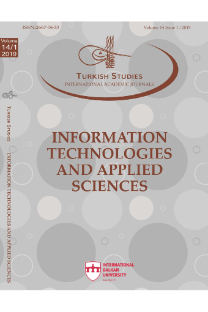Makine Öğrenme Algoritmaları ile Karaciğer Hastalığının Teşhisi
Karaciğer hastalıkları dünya çapında oldukça yaygın görülen hastalıklardandır. Karaciğer hastalıkları vücutta büyük tehlikeler oluşturabilmektedir. Bu sebeplerden ötürü alkolden bağımsız karaciğer yağlanması, alkolik karaciğer yağlanması, hepatit A, hepatit B, hepatit C, hepatit D, karaciğer büyümesi, karaciğer kanseri, karaciğer ve intrahepatik safra kanalı kanseri, karaciğer yetmezliği ve siroz gibi karaciğer hastalıklarının mümkün oldukça erken bir aşamada teşhisi ve tedavisi hayati öneme sahiptir. Tıpta geleneksel teşhis yöntemleri hala kullanılmaktadır. Ancak bugün gelişen yapay zekâ teknolojileri sayesinde hastalık teşhis, tanı ve tedavi süreçlerinde hekimlere destek olacak güçlü araçlar sunulabilmektedir. Bu çalışmada WEKA veri madenciliği aracından faydalanılarak J48, Lojistik Model Ağacı (LMT), Decision Stump, Hoeffding Tree, REP Tree, Random Forest, Random Tree ve IBk makine öğrenme algoritmaları Karaciğer Hasta Veri Seti (ILPD) üzerinde çalışılmıştır. Bu algoritmalar ile en iyi teşhis sonucuna ulaşılmaya çalışılmıştır. Çalışmada kullanılan makine öğrenme algoritmalarının performans ve başarılarını değerlendirmek için ilk önce karışıklık matrisleri oluşturulmuş daha sonra tıpta da genel geçerliliği kabul edilen ölçütlere göre hesaplamalar yapılmıştır. Bu algoritmaların ILDP veri seti üzerindeki performansları sırasıyla doğruluk, duyarlılık, özgüllük, ROC, MCC, Anma, Kesinlik ve F-Ölçütü kriterlerine göre hesaplanmıştır. Makine öğrenme algoritmalarından elde edilen en iyi modeller teşhise ve tedaviye yönelik geliştirilecek akıllı sistemlerin karar mekanizmalarını oluşturmak için kullanılabilmektedir. Bu çalışmadaelde ettiğimiz modeller dünyada yaygın olarak görülen karaciğer hastalılarının tüm hastanelerde erken evrede yakalanmasını sağlayacak akıllı bir sistemin alt yapısını oluşturma potansiyeline sahiptir.
Diagnosis of Liver Disease with Machine Learning Algortihms
Liver diseases are among quite common diseases seen worldwide. Liver diseases can pose great dangers in the body. For these reasons, liver disease Nonalcoholic fatty liver, alcoholic liver fatty, hepatitis A, hepatitis B, hepatitis C, hepatitis D, liver enlargement, liver cancer, liver and intrahepatic bile duct cancer, liver failure and cirrhosis as early as possible diagnosis and its treatment is vital. Traditional diagnostic methods are still used in medicine. However, today, thanks to the developing artificial intelligence technologies, powerful tools can be provided to support physicians in disease diagnosis, detection and treatment processes. In this study, using WEKA data mining tool by means of J48, Logistic Model Tree (LMT), Decision Stump, Hoeffding Tree, REP Tree, Random Forest, Random Tree and IBk machine learning algorithms are studied on Liver Patient Data Set (ILPD). With these algorithms, the best diagnostic result was tried to be reached. In order to evaluate the performance and success of the machine learning algorithms used in the study, firstly the confusion matrices were created and then the calculations were made according to the accepted values of the general validity in medicine. Performances of these algorithms on ILDP data set were calculated according to accuracy, sensitivity, specificity, ROC, MCC, recall, precision and F-Measure criteria respevtively. The best models obtained from machine learning algorithms can be used to create inference engines of intelligent systems to be developed for diagnosis and treatment. The obtained models have potential to create substructure of a smart system that enable to be detected the worldwide common liver diseases in early phase in all health institutions.
___
- Dwivedi, A., Dewangan, A.K. and Shrivas, A. K. (2017). “Analysis and Comparison of Models for Classification of Diabetic Disease”. International Journal for Research in Applied Science & Engineering Technology (IJRASET), 5(V), 2111-2114.
- Gulia, A., Vohra, R., and Rani, P. (2014). “Liver Patient Classification Using Intelligent Techniques”. (IJCSIT) International Journal of Computer Science and Information Technologies, 5 (4) , 5110-5115.
- Kaya, Y. (2017). Motokaravan sigortacılığı tahmin modellemesi ve uygulanan yöntemlerin karşılaştırılması, Yüksek Lisans Tezi, Beykent Üniversitesi Fen Bilimleri Enstitüsü, İstanbul.
- Muthuselvan, S., Rajapraksh, S., Somasundaram, K. and Karthik, K. (2018). “Classification of Liver Patient Dataset Using Machine Learning Algorithms”. International Journal of Engineering & Technology, 7(3.34), 323-326.
- Pahareeya, J., Vohra, R., Makhijani, J. and Patsariya, S. (2014). “Liver Patient Classification using Intelligence Techniques”. International Journal of Advanced Research in Computer Science and Software Engineering, 4(2), 295-299.
- url http://bilgisayarkavramlari.sadievrenseker.com/2012/01/29/istatistiksel-normallestirme statistical-normalisation/ (17.02.2019)
